Selfish Prophet Syndrome (2024) is a restructured narrative that follows overlooked parts of the Prophet Johan’s journey through a humorous lens, provoked by current events and societal behaviors. This body of work investigates Jonah’s stubborn characteristics, my own frustration with the way this story is retold, and highlights differences in scripture, oration, digression, and casual storytelling connecting to the various materials that comprise the displayed artworks.
My interpretation of the Old Testament story focuses on Jonah’s hatred towards the people of Nineveh, using the ancient Assyrian city as a metaphor for discrimination and cultural prejudice. Nineveh usually serves as a screen onto which readers project their own biases, reinforcing feelings of superiority. In turn, it reflects positive self-perceptions by attributing wickedness to others. In Selfish Prophet Syndrome, I want to highlight Jonah as the one who does this kind of projecting.
Traditionally, Jonah’s story is interpreted through themes of repentance, obedience to God, and divine intervention. However, I view it as a narrative highlighting the obstruction of conflict resolution by ingrained, unexamined notions of morality. Jonah emerges as the story’s true antagonist—a prophet of prejudice who defies his prophetic calling out of resentment, denying God’s mercy to his perceived enemies, the Ninevites. This nuanced aspect often gets overshadowed by the outlandish whale dilemma.

Cut paper, glazed ceramic, zine

Installation View. India ink, oil pastel and linoleum prints with adhered copper plate etching, aquatint, and drypoint on paper, silkscreen ink on cut paper, glazed ceramics, variable dimensions Photo Credit: Sam Fritch

Cut paper, glazed ceramic, chalk

Installation View. India ink, oil pastel and linoleum prints with adhered copper plate etching, aquatint, and drypoint on paper, silkscreen ink on cut paper, glazed ceramics, variable dimensions Photo Credit: Sam Fritch

Installation View. India ink, oil pastel and linoleum prints with adhered copper plate etching, aquatint, and drypoint on paper, silkscreen ink on cut paper, glazed ceramics, variable dimensions Photo Credit: Sam Fritch
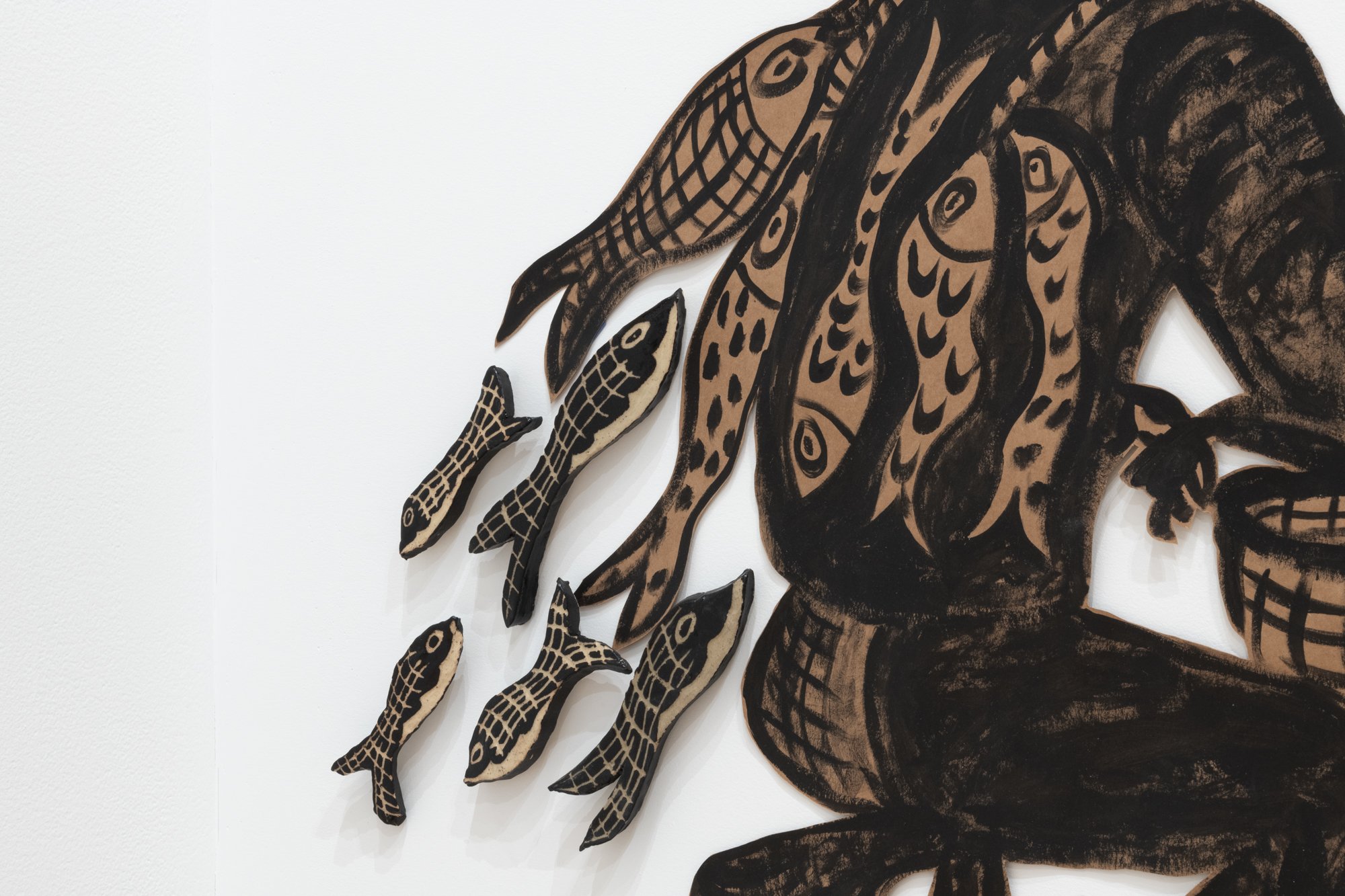
Cut paper, screenprint ink, glazed ceramic,

Cut paper, screenprint ink, glazed ceramic, chalk


Installation View. India ink, oil pastel and linoleum prints with adhered copper plate etching, aquatint, and drypoint on paper, silkscreen ink on cut paper, glazed ceramics, variable dimensions Photo Credit: Sam Fritch

Installation View. India ink, oil pastel and linoleum prints with adhered copper plate etching, aquatint, and drypoint on paper, silkscreen ink on cut paper, glazed ceramics, variable dimensions Photo Credit: Sam Fritch

Port of Joppa, 2024, India ink on frosted mylar


Cut paper, glazed ceramic, chalk
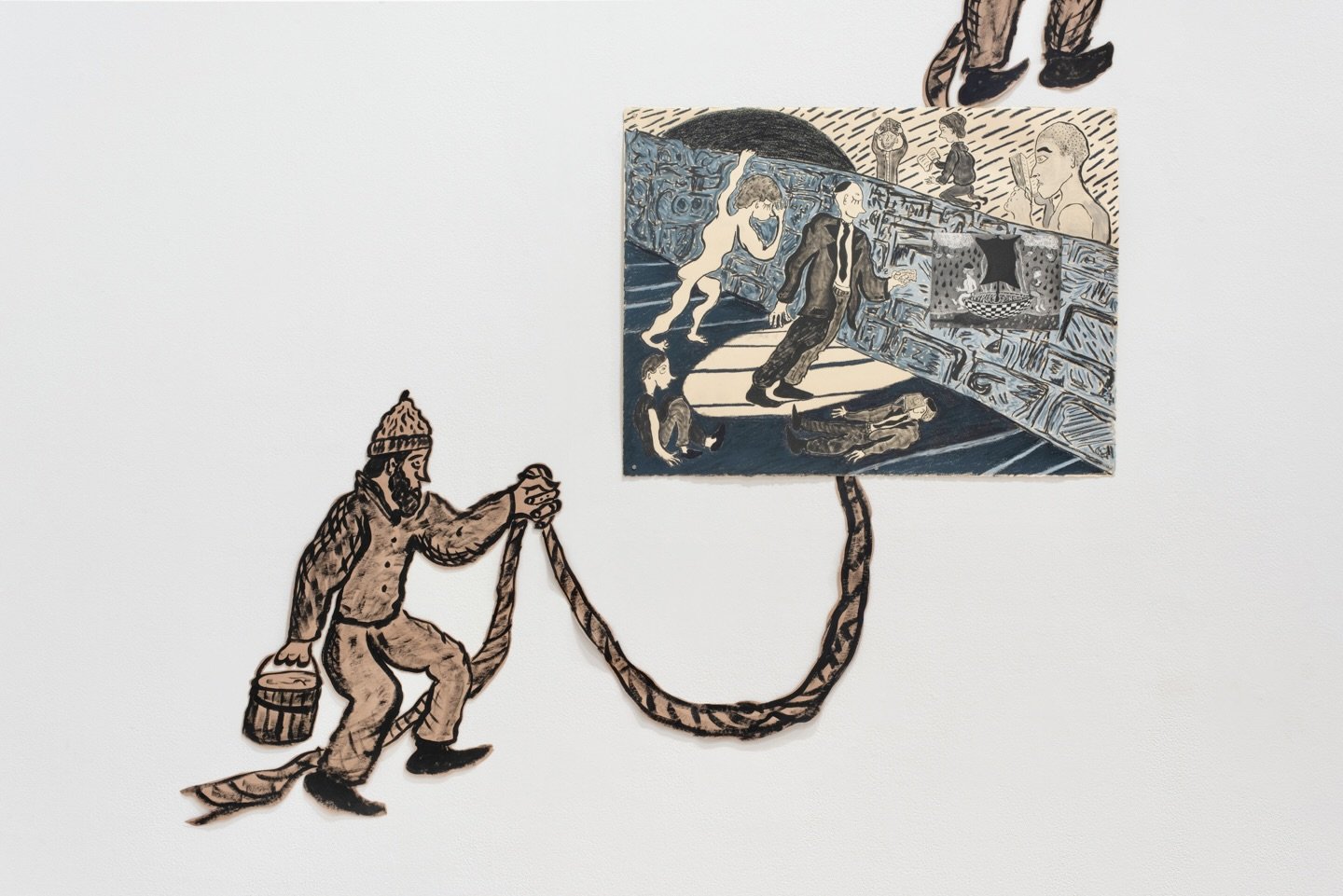
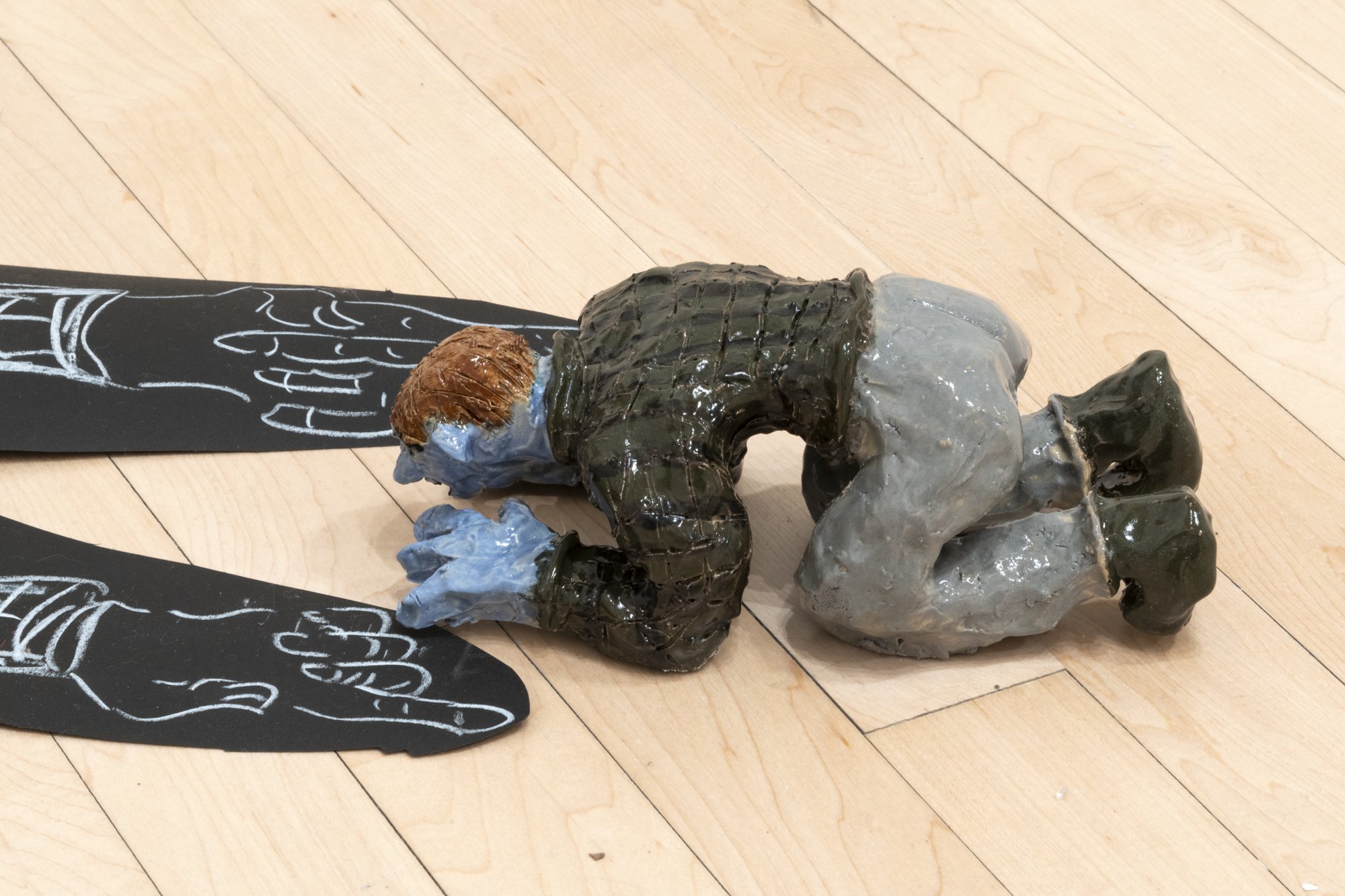
Cut paper, glazed ceramic, chalk

Installation View. India ink, oil pastel and linoleum prints with adhered copper plate etching, aquatint, and drypoint on paper, silkscreen ink on cut paper, glazed ceramics, variable dimensions Photo Credit: Sam Fritch
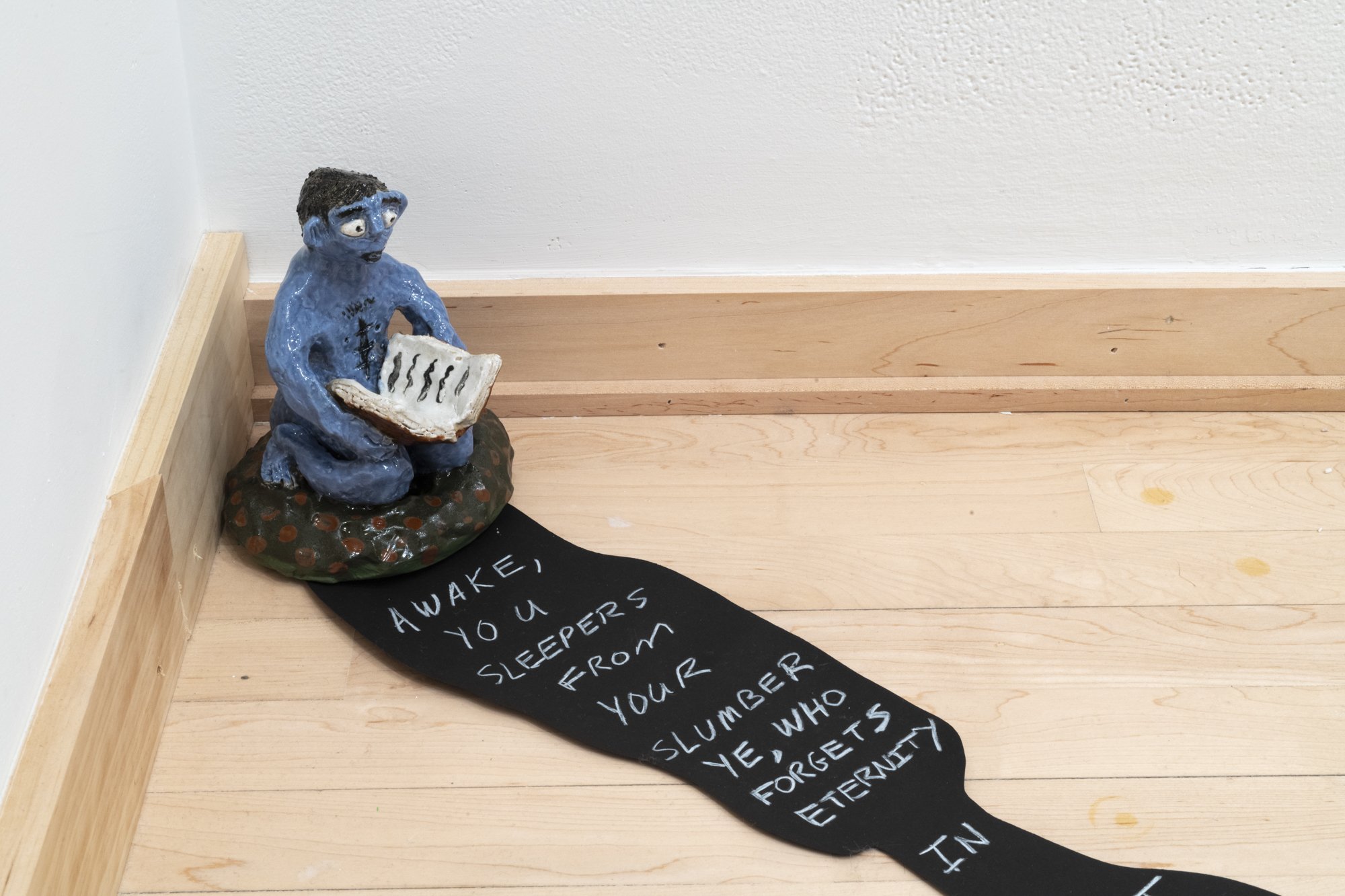
Cut paper, glazed ceramic, chalk

Installation View. India ink, oil pastel and linoleum prints with adhered copper plate etching, aquatint, and drypoint on paper, silkscreen ink on cut paper, glazed ceramics, variable dimensions Photo Credit: Sam Fritch

glazed ceramic,

Installation View. India ink, oil pastel and linoleum prints with adhered copper plate etching, aquatint, and drypoint on paper, silkscreen ink on cut paper, glazed ceramics, variable dimensions Photo Credit: Sam Fritch

Cut paper, glazed ceramic, chalk

Cut paper, screenprint ink

Cut paper, glazed ceramic,

Cut paper, screenprint ink, ceramic

Installation View. India ink, oil pastel and linoleum prints with adhered copper plate etching, aquatint, and drypoint on paper, silkscreen ink on cut paper, glazed ceramics, variable dimensions Photo Credit: Sam Fritch

Cut paper, glazed ceramic, chalk

Installation View. India ink, oil pastel and linoleum prints with adhered copper plate etching, aquatint, and drypoint on paper, silkscreen ink on cut paper, glazed ceramics, variable dimensions Photo Credit: Sam Fritch

Installation View. India ink, oil pastel and linoleum prints with adhered copper plate etching, aquatint, and drypoint on paper, silkscreen ink on cut paper, glazed ceramics, variable dimensions Photo Credit: Sam Fritch

The Decree is Written (Why Me?) 2024, India ink and oil pastel with adhered copper plate etching, aquatint, and drypoint on paper, 22.5”x 30”.

Running Away to Tarshish (Like Retiring in Florida), 2024,India ink and oil pastel with adhered copper plate etching, aquatint, and drypoint on paper, 22.5”x 30”.
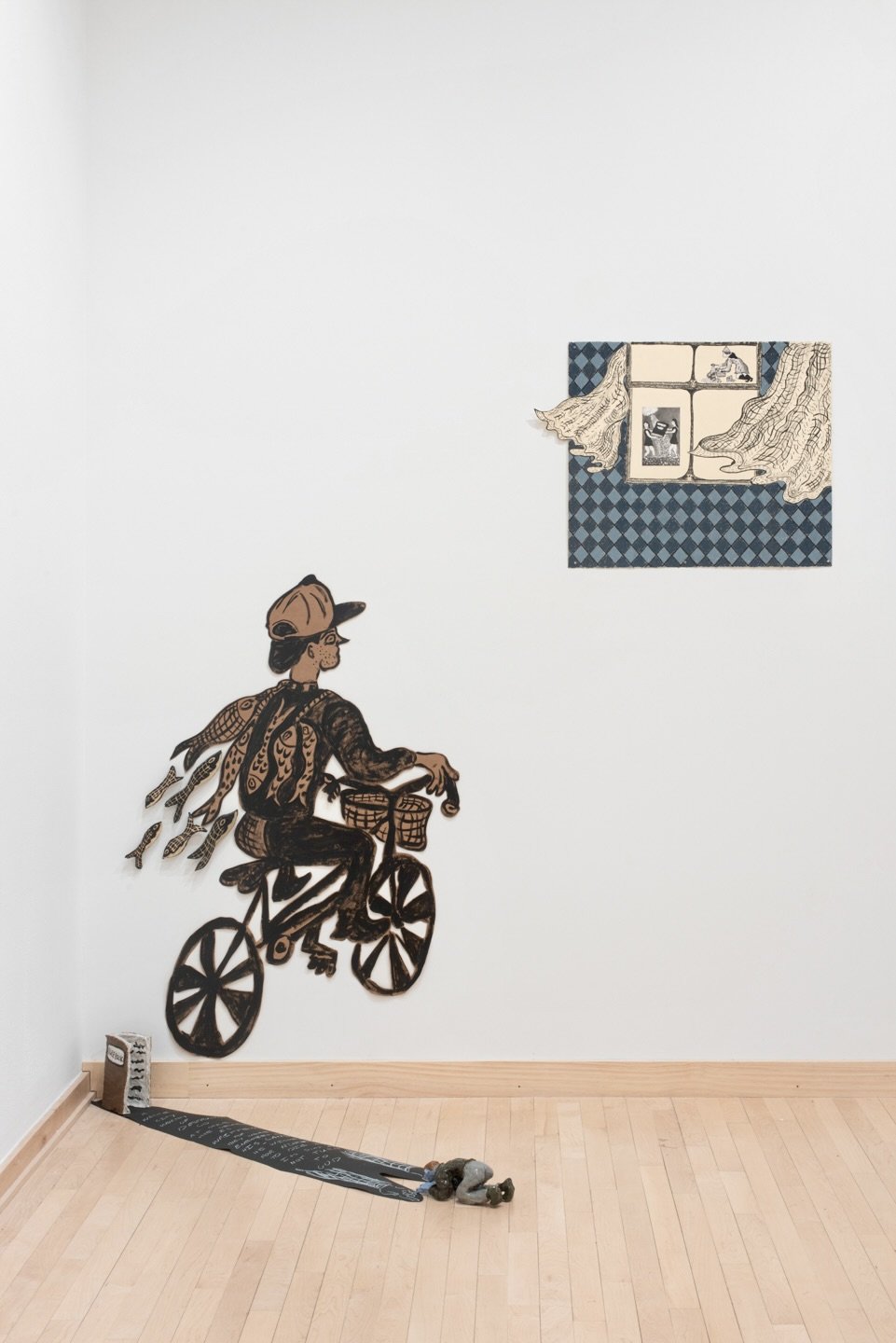
India ink and oil pastel with adhered copper plate etching, aquatint, and drypoint on paper, cut paper, screenprint ink, glazed ceramic, chalk


Cut paper, screenprint ink, india ink and oil pastel with adhered copper plate etching, aquatint, and drypoint on paper,
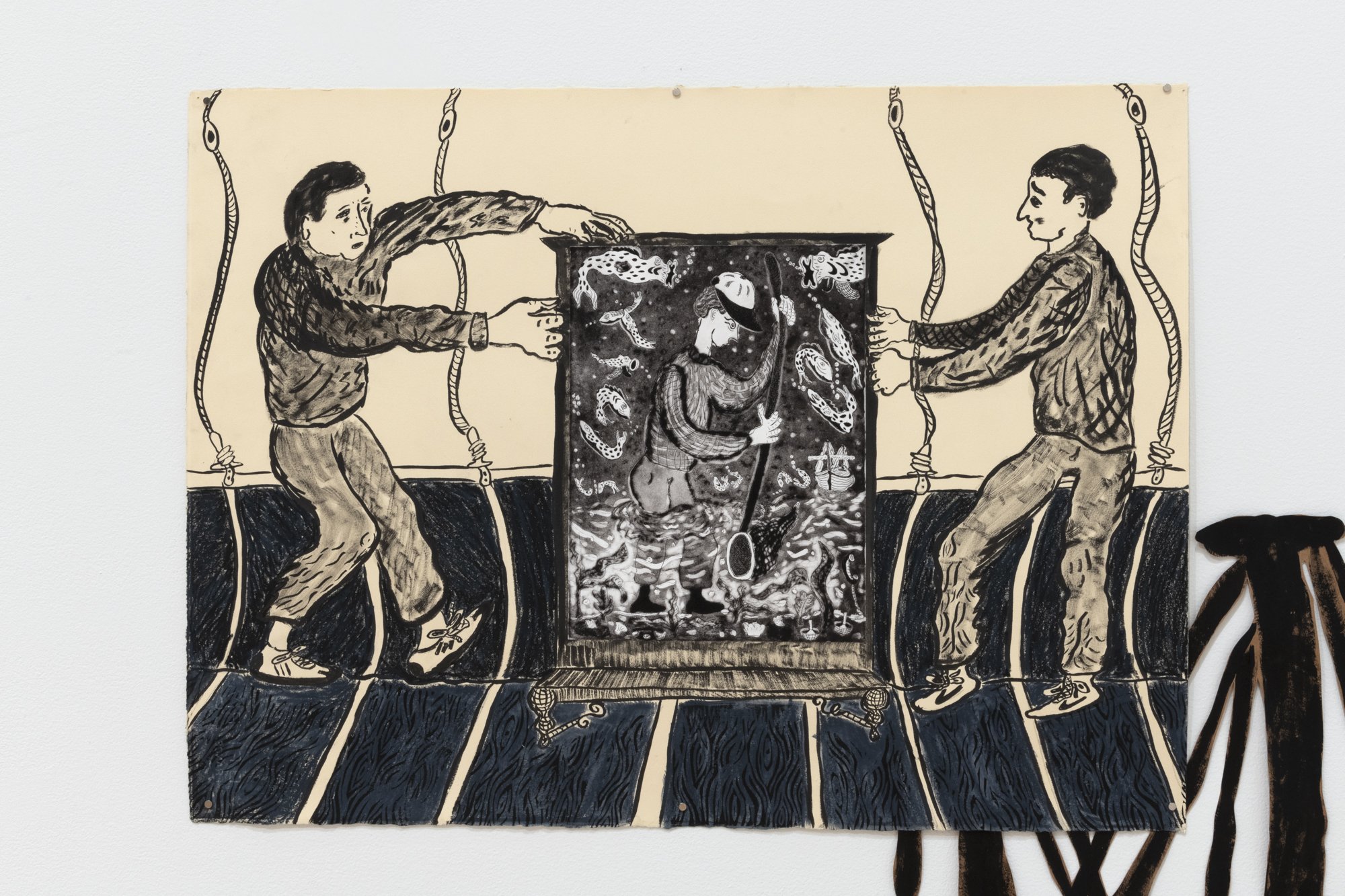
The Casting of the Prophet (Swim Time), 2024, India ink, oil pastel and linoleum print with adhered copper plate etching, aquatint, and drypoint on paper, 22.5”x 30”.

The Arrival to Nineveh (Covered in Whale Saliva), 2024, India ink and oil pastel with adhered copper plate etching, aquatint, and drypoint on paper, 22.5”x 30”.
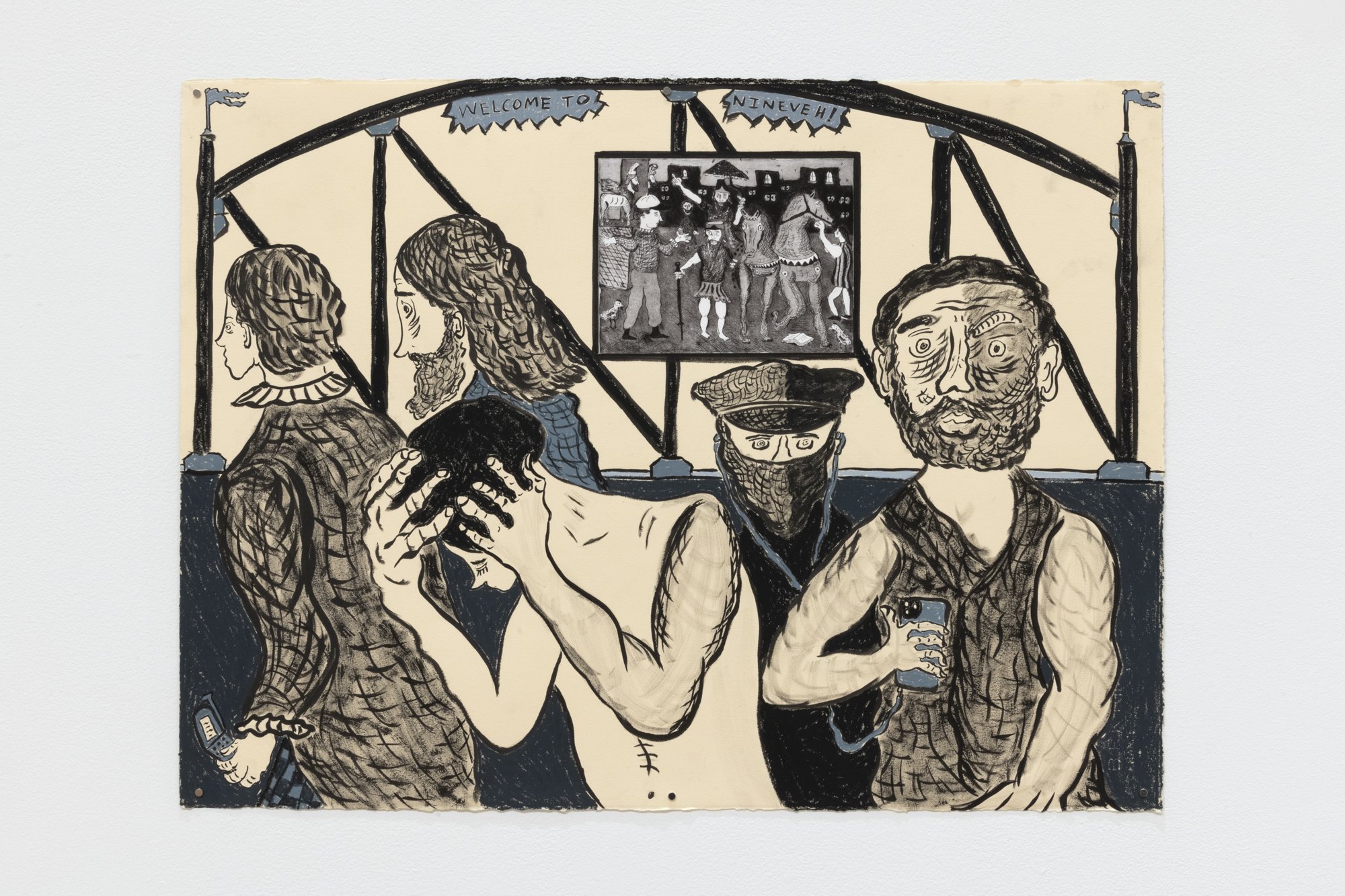
A Lousy Sermon Preached With Reluctance (The Acceptance by the Ninivites), 2024, India ink and oil pastel with adhered copper plate etching, aquatint, and drypoint on paper, 22.5”x 30”.

Is it Right for you to be Angry about The Plant? (Hate Prevails), 2024, India ink and oil pastel with adhered linoleum print and copper plate etching, aquatint, and drypoint on paper, 22.5”x 30”.

Installation View. India ink, oil pastel and linoleum prints with adhered copper plate etching, aquatint, and drypoint on paper, silkscreen ink on cut paper, glazed ceramics, variable dimensions Photo Credit: Sam Fritch

The Skeptics, 2023, India ink, oil pastel and linoleum print with adhered copper plate etching, aquatint, and drypoint on paper, 22.5”x 30”.

“To the Surface they Float”, Copper plate etchings, aquatint, and drypoint on BFK Rives, Plate: 6” x 8”, Paper: 11 1/2” x 15”, Edition of 10
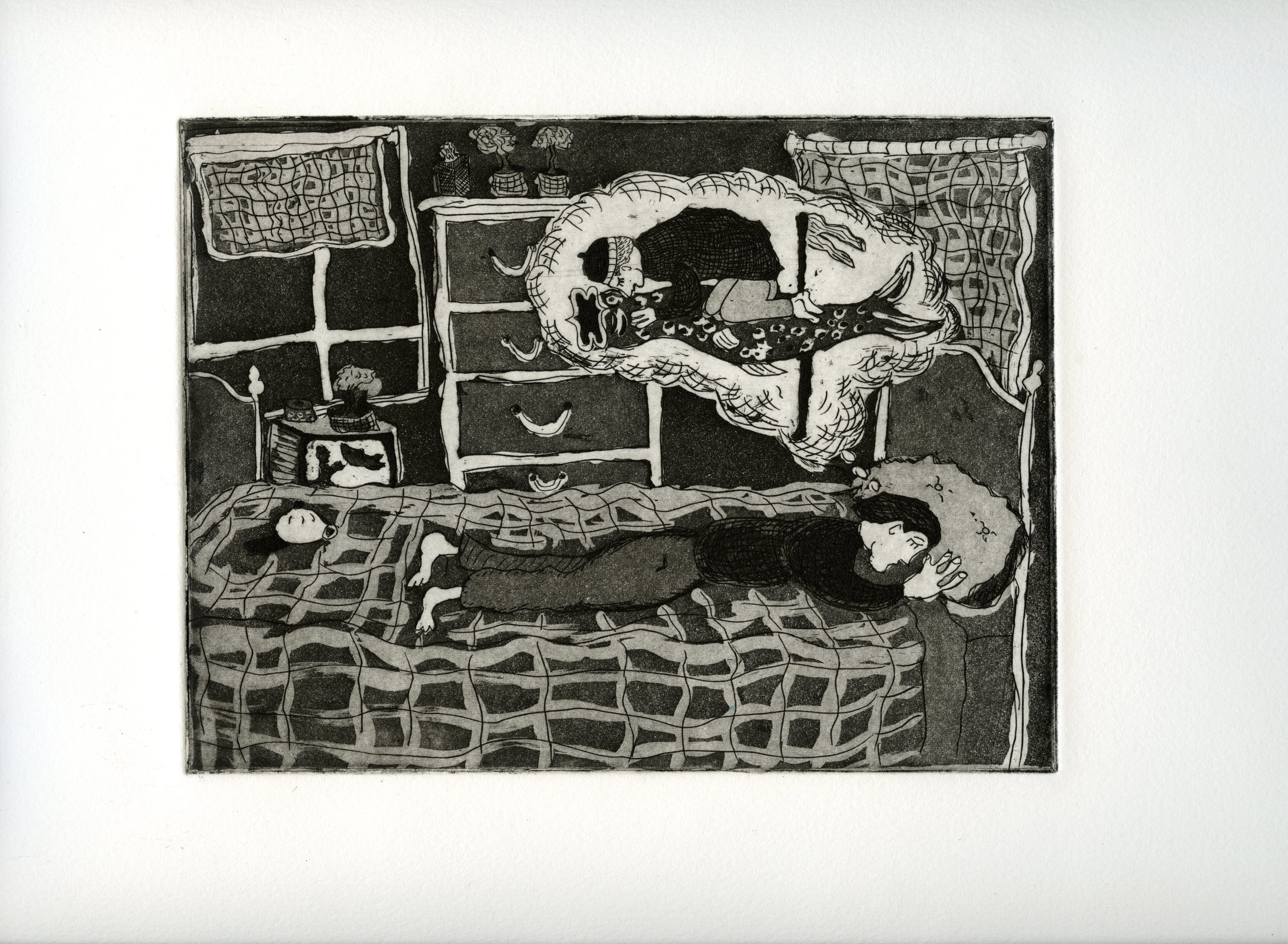
“Awake, You Sleepers From Your Slumber”, Copper plate etchings, aquatint, and drypoint on BFK Rives, Plate: 6” x 8”, Paper: 11 1/2” x 15”, Edition of 10

“The Arrival to Nineveh”, Copper plate etchings, aquatint, and drypoint on BFK Rives, Plate: 6” x 8”, Paper: 11 1/2” x 15”, Edition of 10

“Judgement call”, Copper plate etchings, aquatint, and drypoint on BFK Rives, Plate: 6” x 8”, Paper: 11 1/2” x 15”, Edition of 10

“A Lousy Sermon”, Copper plate etchings, aquatint, and drypoint on BFK Rives, Plate: 6” x 8”, Paper: 11 1/2” x 15”, Edition of 10

“Anger about Compassion” Copper plate etchings, aquatint, and drypoint on BFK Rives, Plate: 6” x 8”, Paper: 11 1/2” x 15”, Edition of 10

“The Decree is Written”, Copper plate etchings, aquatint, and drypoint on BFK Rives, Plate: 6” x 8”, Paper: 11 1/2” x 15”, Edition of 10